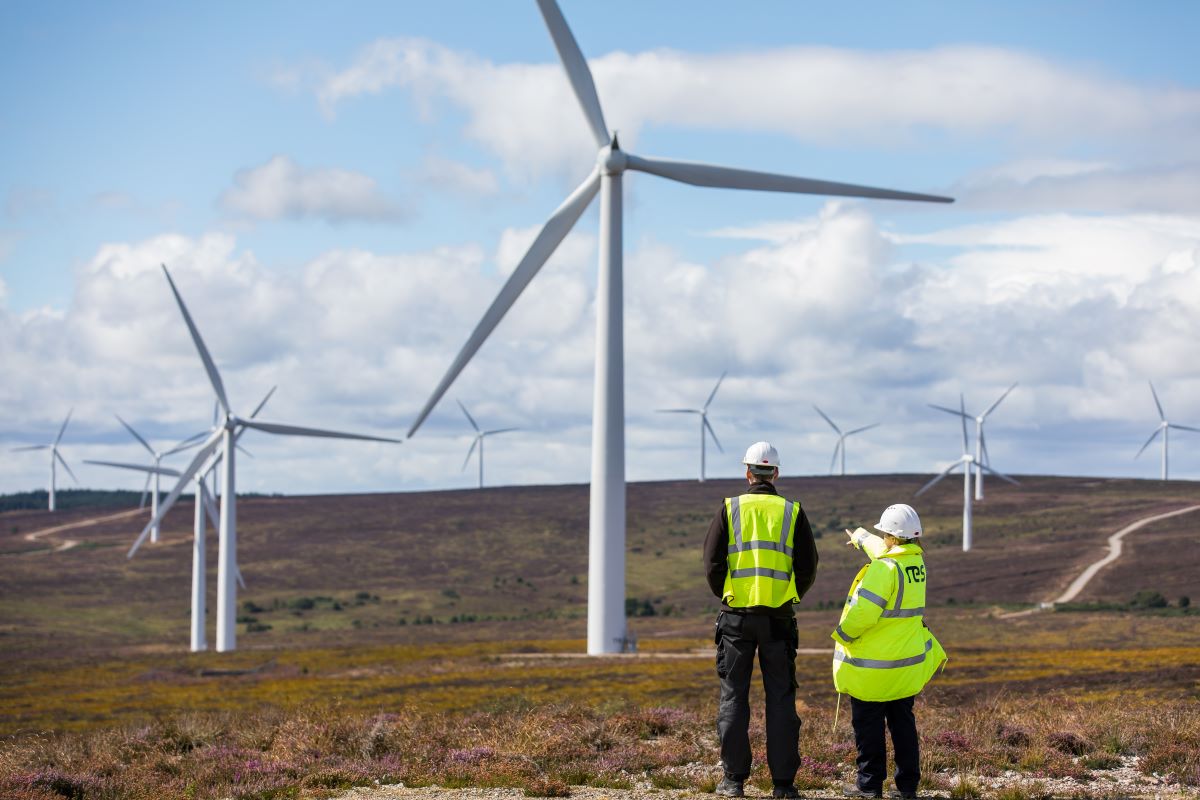Aberdeenshire Council’s Infrastructure Services Committee will provide their formal response to RES’ Hill of Fare Wind Farm proposal next week, ahead of Scottish Ministers making a final determination. The 16-turbine scheme, which lies approximately 6km north of Banchory in an area identified by Aberdeenshire Council as having ‘potential for wind farm development’, is predicted to deliver a £156 million boost for the local economy – including a predicted 230 construction jobs. It comes just days after it was confirmed that the UK Government’s publicly owned, clean power company, GB Energy, would be headquartered in Aberdeen.
The proposal, which first went public in August 2022 as a 17-turbine scheme with tip heights of up to 250m, has been refined to a 16-turbine design with a mix of 180m and 200m tip heights following extensive consultation. A Section 36 application for the project was submitted to Scottish Ministers by RES at the end of 2023 – with Additional Information recently included to further bolster the scheme in response to statutory consultation feedback. Aberdeenshire Council now has until 17th October to provide their formal response on the proposal to Scottish Ministers.
Gavin Shirley, RES’ Senior Development Project Manager for Hill of Fare, added: “We have undertaken hundreds of hours of detailed surveys and assessments to build a strong understanding of the site and minimise impacts wherever possible. In parallel, we’ve also undertaken extensive consultation with the local community to gather feedback, which has helped to inform and shape the design. We are grateful to everyone who took the time to engage with us and share their views on the proposal.
“This wind farm comes forward at an important time for the north east, which will help to lead the transition to renewables and will now host the UK Government’s flagship clean power company in Aberdeen. We hope that the Committee recognises the significant benefit that Hill of Fare could deliver to the local area as well as the important part that the project could play in the wider transition to renewables.”
Onshore wind is quick to build and, alongside other renewable energy technologies, can generate the cheapest form of new electricity generation. It also increases energy security by reducing our reliance upon imports. Modern onshore wind turbines have installed capacities of around 6MW or more, meaning that each individual turbine is capable of generating enough power to meet the average electricity consumption of more than 5,000 homes.
If consented, Hill of Fare Wind Farm would enhance the biodiversity of the area through habitat management, and improve access to the hill via public car parking and additional tracks. In line with Scottish Government guidance there will be a tailored community benefit package worth £26.4 million over the project’s lifetime which may include RES’ unique Local Electricity Discount Scheme (LEDS) and RES is also investigating the opportunity of ‘shared ownership’ for the community in the wind farm.
The £150M+ infrastructure project would also be capable of generating enough clean, low-cost renewable electricity for around 101,000 homes, reducing the equivalent of 69,000 tonnes of carbon emissions each year and achieving carbon payback within 2.8 years.
Recent polling by the Department for Energy Security and Net Zero (DESNZ) has shown that 78% of the UK public support onshore wind, with only 5% opposed1. This popular view has also been increasingly reflected at a local council level over the last couple of years with over 70% of polled councillors wanting the government to prioritise investment for onshore wind turbines.
